Birds come in all shapes, sizes, and colors, each species completely unique and beautiful in its own way. If you want to identify different birds with red beaks, check out these 20 species with this unique marking and learn some interesting facts.
1. Arctic Tern
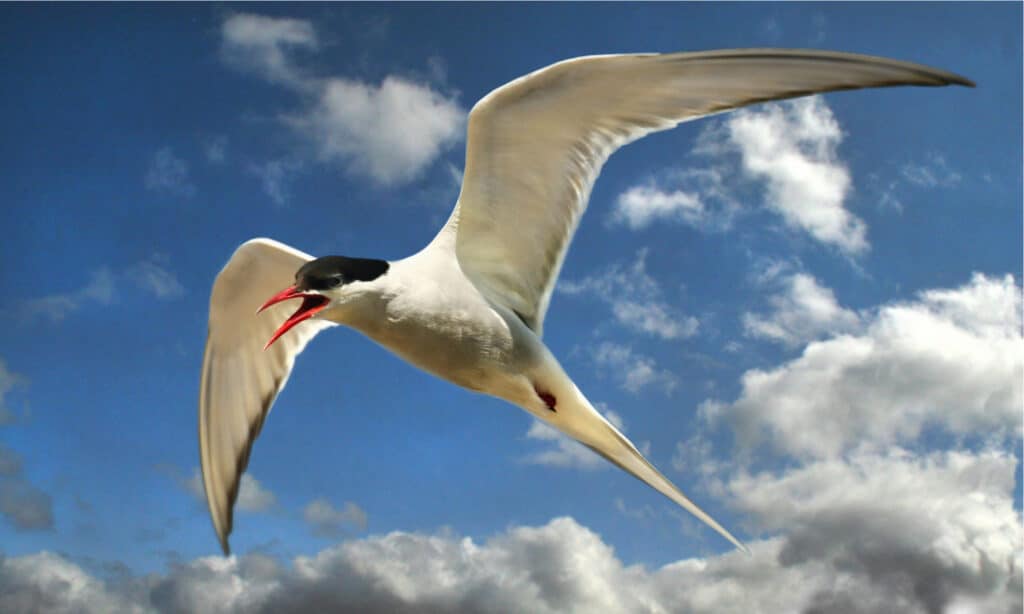
Arctic terns utilize the ocean breeze to travel.
©ASPhoto2013/Shutterstock.com
The Arctic tern features a lightweight, small body with short legs, narrow wings, and a long, red beak. Because these birds utilize ocean breezes to carry them for very long distances, they do not need to flap their wing often. They can even sleep and eat while gliding!
2. Northern Cardinal

Northern cardinals are vibrant birds with red beaks.
©Bonnie Taylor Barry/Shutterstock.com
The northern cardinal may be one of the most familiar birds with red beaks, especially if you live in the Eastern United States. Except for the black face mask and some black streaking in its wings, this vibrant species is completely bright red. Cardinals are also notable for their shaggy crests.
3. American Oystercatcher
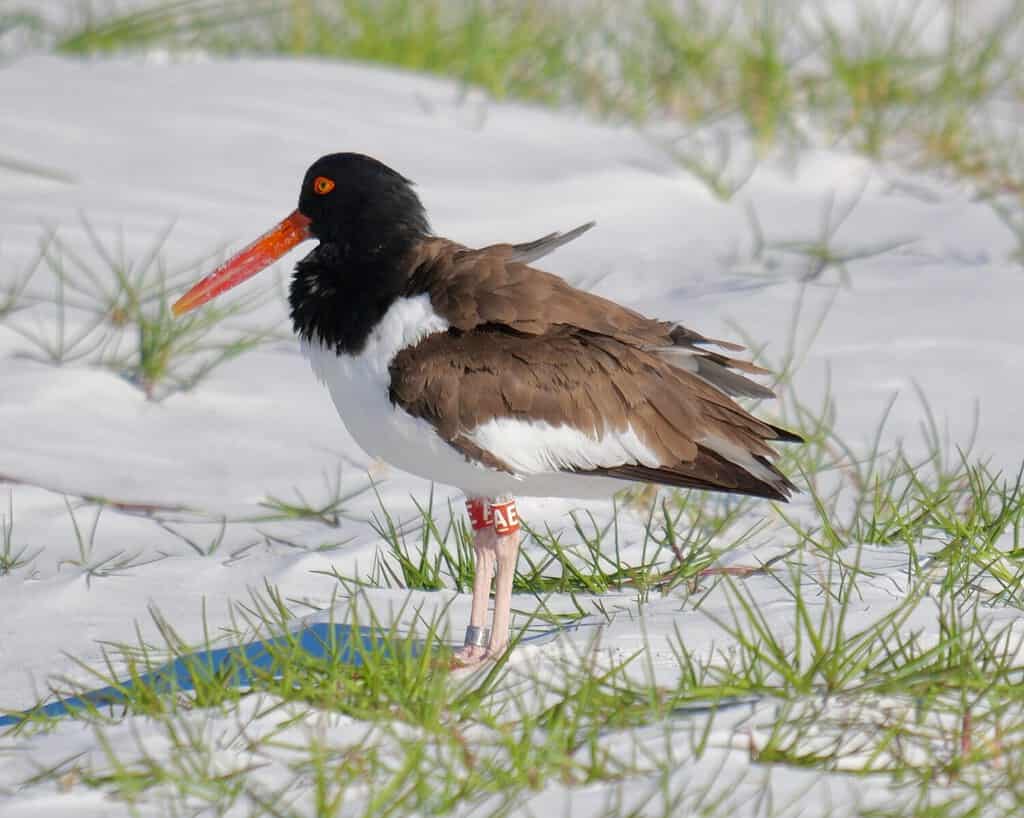
American oystercatchers live in coastal habitats.
©Archaeopteryx Tours/Shutterstock.com
This boldly patterned shorebird features black, white, and gray plumage, with long, red bills and reddish-yellow eyes. Because American oystercatchers love coastal habitats, you can find them on beaches, salt marshes, mudflats, and dunes. True to its name, the oystercatcher dines on saltwater mollusks, like oysters, clams, and mussels.
4. Common Merganser
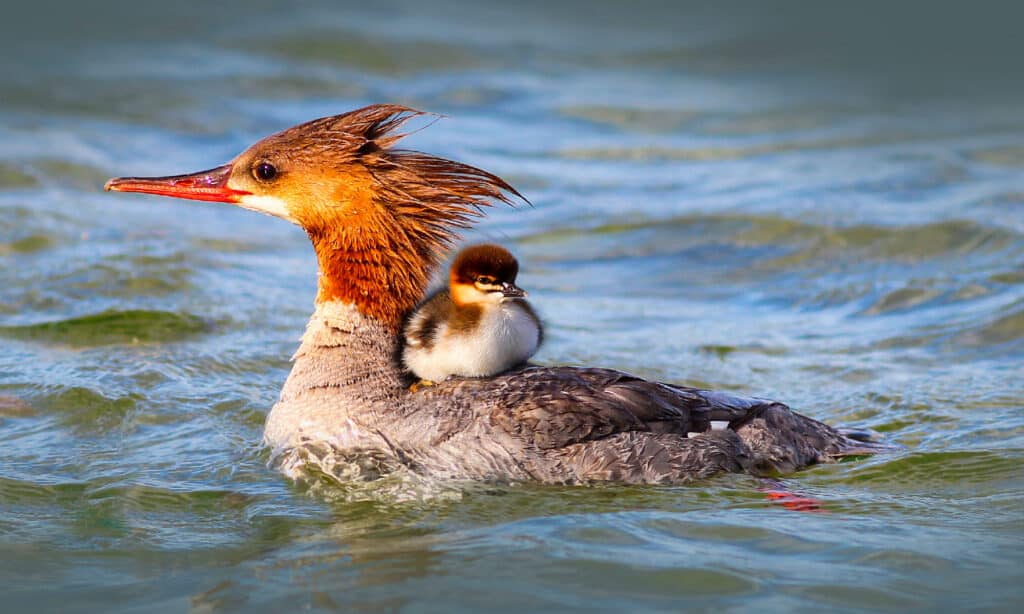
Common mergansers float gracefully down rivers and wooded lakes.
©iStock.com/Anna39
The common merganser is a streamlined duck with gray and white bodies, rufous-colored heads, and red beaks. These birds spend their days floating gracefully down crystal-clear rivers and wooded lakes. The common merganser is the largest of the three merganser species in the United States.
5. Red-Billed Chough
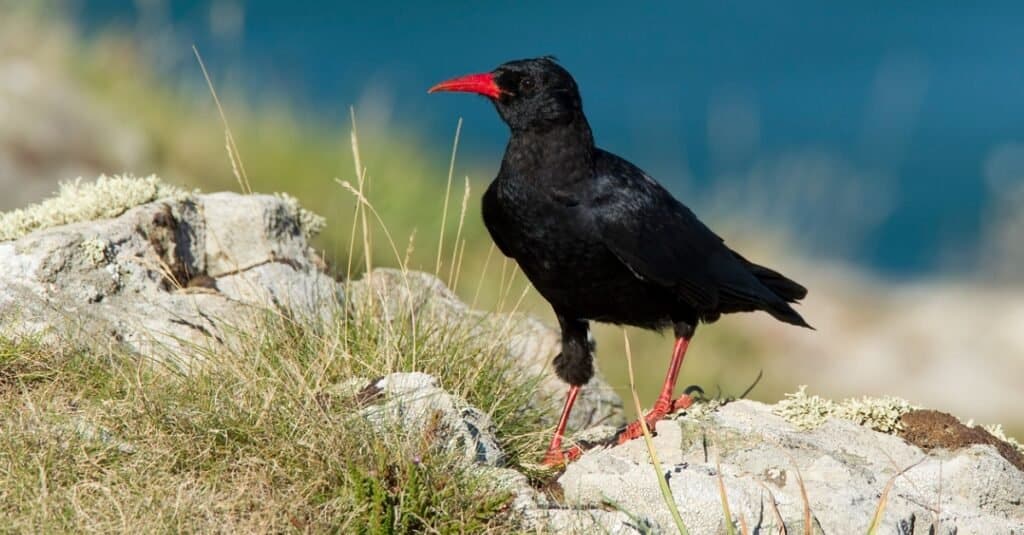
The red-billed chough uses tools to break open a shell.
©iStock.com/birdsonline
Also known as the Cornish chough, the red-billed chough belongs to the crow family and features all-black plumage, red feet, and red bills. They are one of the rarest members of the crow family, and they live in the United Kingdom. Because their population is in decline, there are only about 450 pairs in the wild.
6. Red-Breasted Merganser
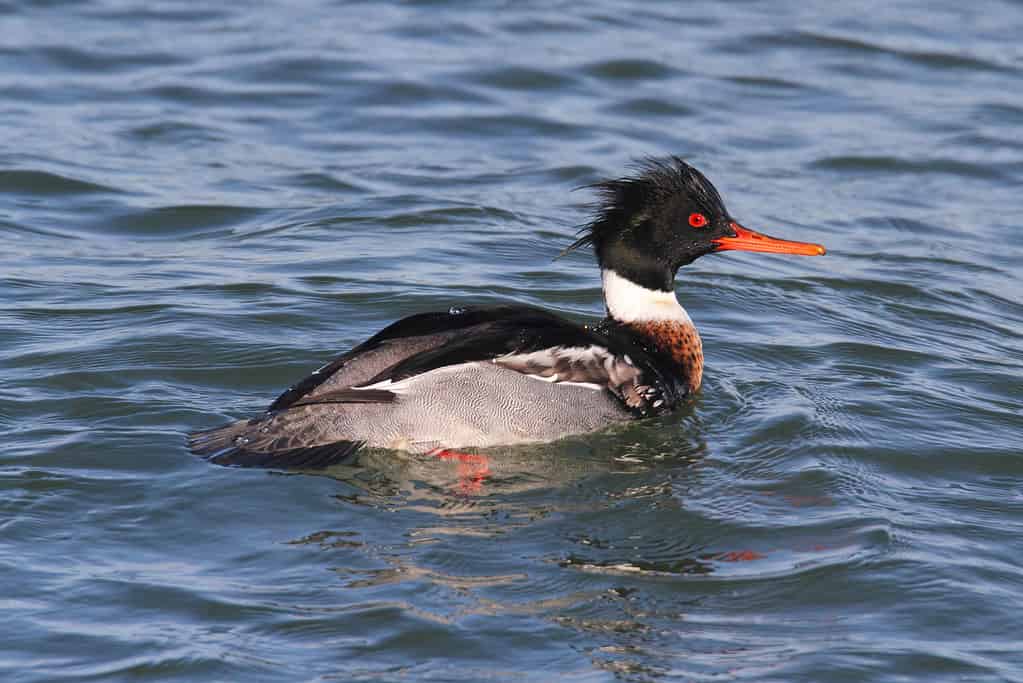
The red-breasted merganser has tiny serrations in their red bills.
©SteveByland/iStock via Getty Images
This shaggy-crested diving duck features black, gray, and white plumage, with a red beak and red eyes. Red-breasted mergansers are also known as sawbills due to the tiny serrations in their bills. These ducks are relatively common along the coastal waters of Mexico and the United States, especially near bays and estuaries.
7. Red-Billed Tropicbird
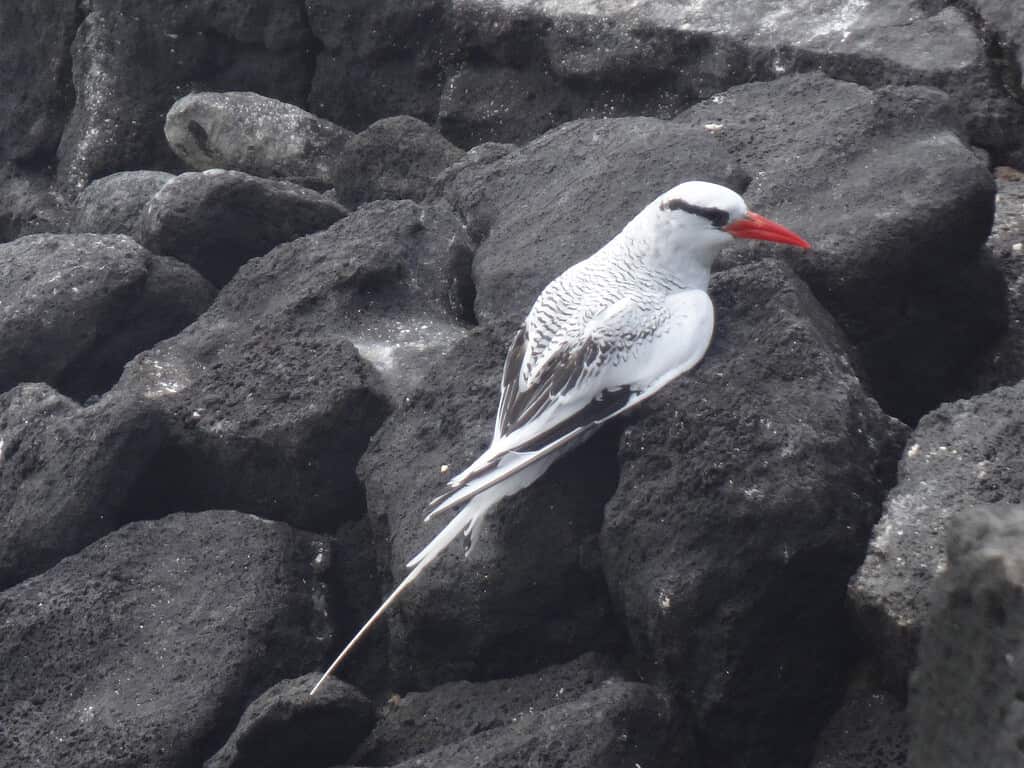
The red-billed
tropicbird
is a tropicbird with mostly white plumage with some black markings.
©Lisa Seeto/iStock via Getty Images
Due to the red-billed tropicbird’s love of the sea, it is very rarely found on land. However, you might spot one around rocky islands near the shoreline. While this species can be difficult to find, you can sometimes catch one off the California coast or near the southern Channel Islands.
8. White Ibis
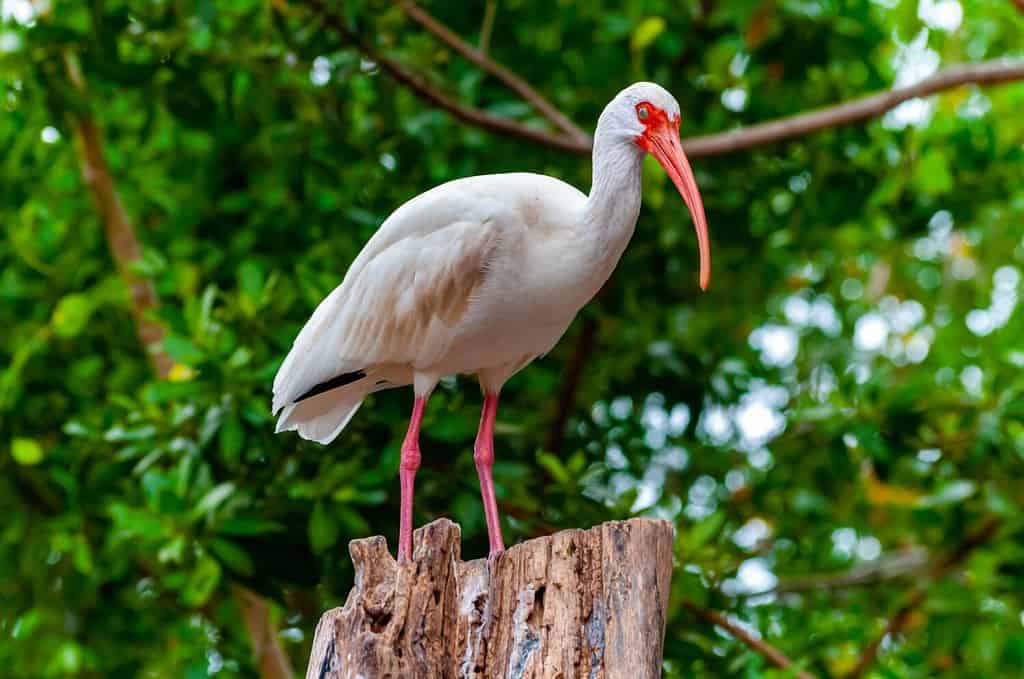
White ibis’ live in freshwater marshes and mangroves.
©Oleg Kovtun Hydrobio/Shutterstock.com
As a wetland bird, you will find the white ibis in freshwater marshes, mangroves, swamps, and coastal estuaries. These wading birds have snow-white plumage, long red legs, and long decurved red beaks. The white ibis is a symbol for wetland conservation, particularly in Florida where its home is threatened by many factors, like pollution and development.
9. Green Wood Hoopoe

The colorful, red-billed green wood hoopoe lives in Hawaii but is native to
Africa
.
©bpperry/iStock via Getty Images
This unusual and beautiful bird is a tropical species native to Africa. The green wood hoopoe grows up to 17 inches long and features iridescent blue, purple, and green plumage with long, decurved red bills. You will only find these birds on the African continent, where they live in wooded habitats.
10. Black Skimmer

Black skimmers strictly inhabit coastal regions.
©Gilbert S. Grant/Shutterstock.com
You may have seen one of these birds resting on the beach or a sandbar the last time you were near the coast. They strictly inhabit coastal regions in North America, where they forage for food mid-air. Black skimmers have graceful, long wings and black-and-white plumage. They also have red feet and black and reddish-orange beaks.
11. Rose-Winged Parakeet

Rose-ringed parakeets can mimic human speech.
©RolfSt/iStock via Getty Images
The rose-winged parakeet is a medium-sized parrot and is also known as the ringneck parrot. These birds measure 16 inches long on average and feature a six to seven-inch wingspan. Rose-winged parakeets can mimic human speech and are tame birds that are receptive to learning.
12. Black Stork
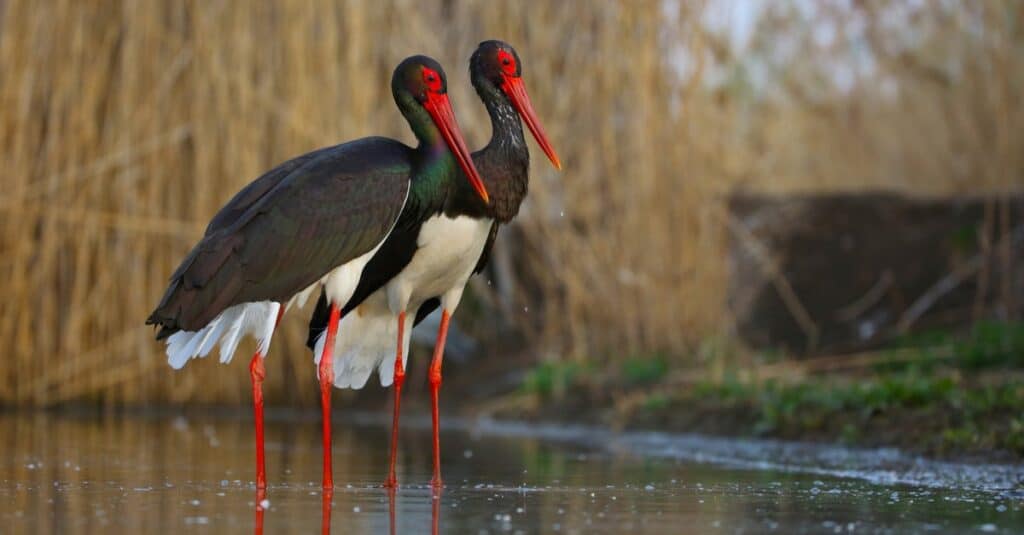
Black storks are large wading birds with long, red beaks.
©iStock.com/JMrocek
While this species is not very common, the black stork belongs to the typical stork family. It features white and dark brown to black plumage with long red legs and a long, thick, and red beak. The black stork is a large wading bird found in parts of Europe, temperate Asia, and Southern Africa.
13. Purple Gallinule
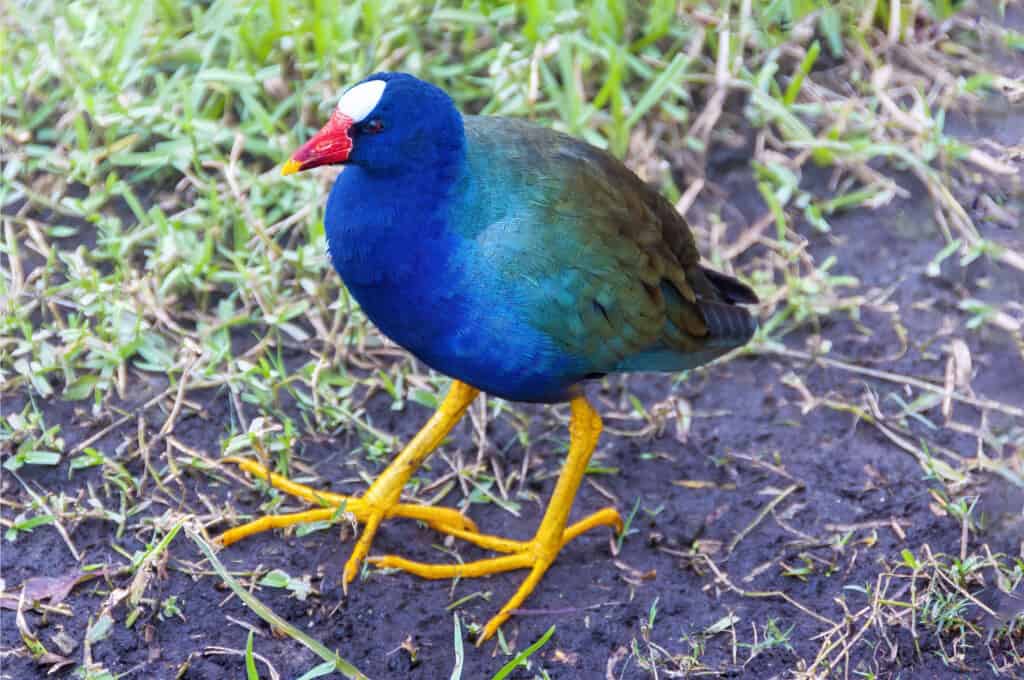
Purple gallinules are noisy aquatic birds.
©iStock.com/barbaraaaa
This unusual and vividly colored bird can be found in the extreme Southeastern United States, primarily Florida. The purple gallinule is a noisy waterbird that can typically be found in freshwater ponds with abundant aquatic vegetation. These birds are omnivores that feed on both animals and vegetation, such as insects, mollusks, leaves, and seeds.
14. Common Waxbill
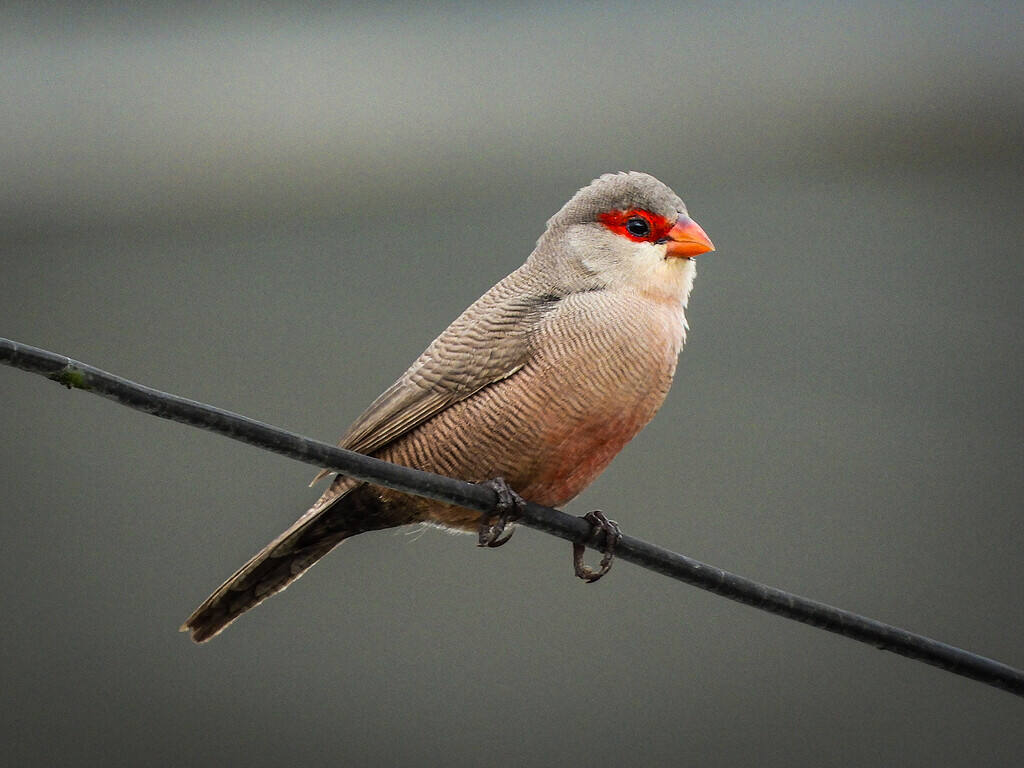
Common waxbills have short reddish orange beaks.
©Pedro Velloso/iStock via Getty Images
The common waxbill is a small bird that belongs to the finch family. It has a tiny frame with a long tail, short wings, and a stout reddish-orange beak. Common waxbills are also known as the St. Helena waxbills, and they are native to sub-Saharan Africa. However, they were introduced to many parts of the world.
15. Common Tern
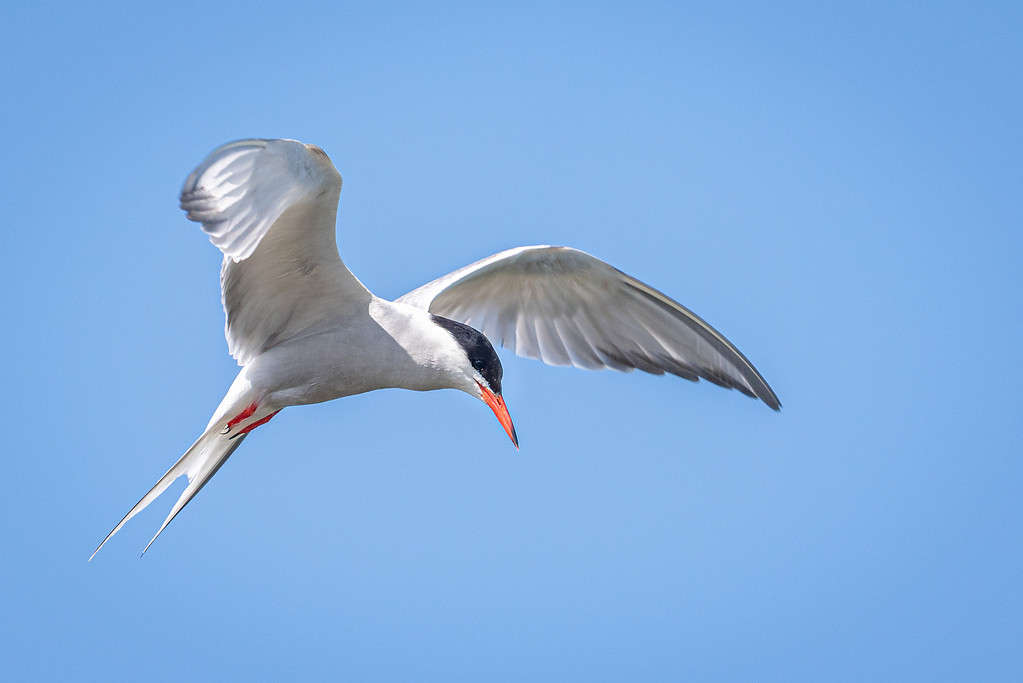
Common terns are strongly migratory.
©Wirestock/iStock via Getty Images
The common tern is most notable for its spectacular narrow and angular wings. These terns have white and gray plumage with black caps and straight, slender, and red bills with black tips. Common terns are seabirds that are strongly migratory and have a circumpolar distribution. These birds breed in temperate and sub-Arctic regions and winter in tropical and subtropical areas.
16. Caspian Tern
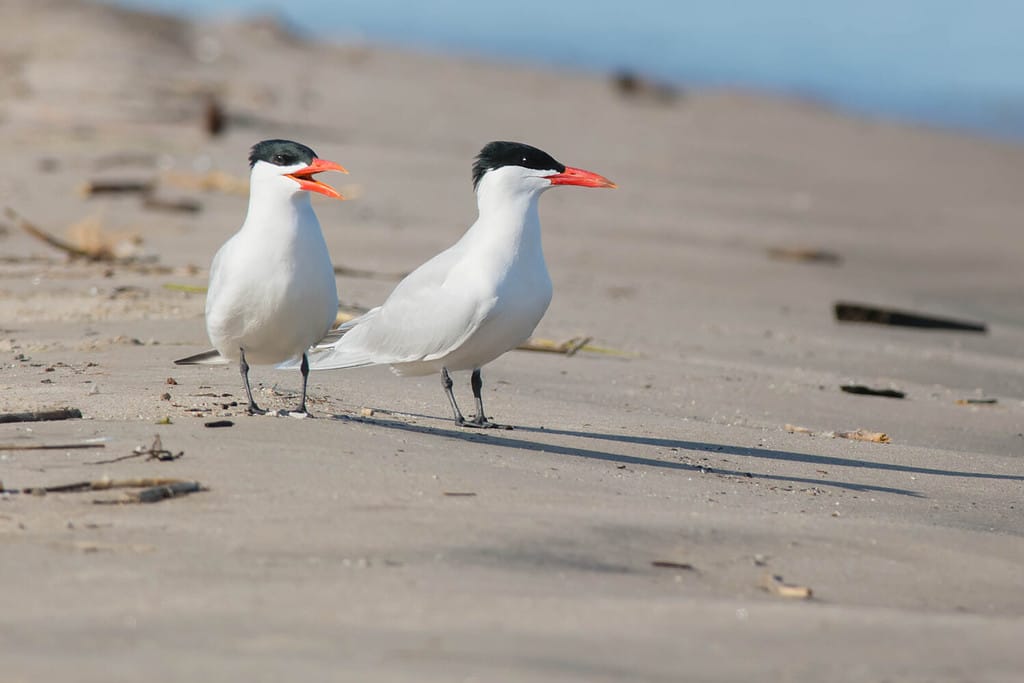
Caspian terns are the largest of the terns.
©Paul Reeves Photography/Shutterstock.com
The Caspian tern looks similar to the common tern, except it’s the largest of the tern species. They, too, have white and gray plumage, black caps, and red beaks. Common terns also have a slenderer bill, narrower wings, and deeply forked tails. While the Caspian tern has a scattered distribution, it has an extensive range.
17. Grey-Headed Kingfisher

A colorful
kingfisher
of the species grey-headed kingfisher sitting wild on a branch on Santiago Island.
©Achim Schneider / reisezielinfo.de/iStock via Getty Images
This kingfisher species has a wide distribution throughout Africa and vibrant colors that are easily distinguishable. Gray-headed kingfishers have brown, black, white, gray, and blue plumage and feature a thick, straight, and bright red beak. Overall, they are medium-sized kingfishers that inhabit woodlands near rivers. Thai bird primarily consumes insects and small invertebrates.
18. African Swamphen
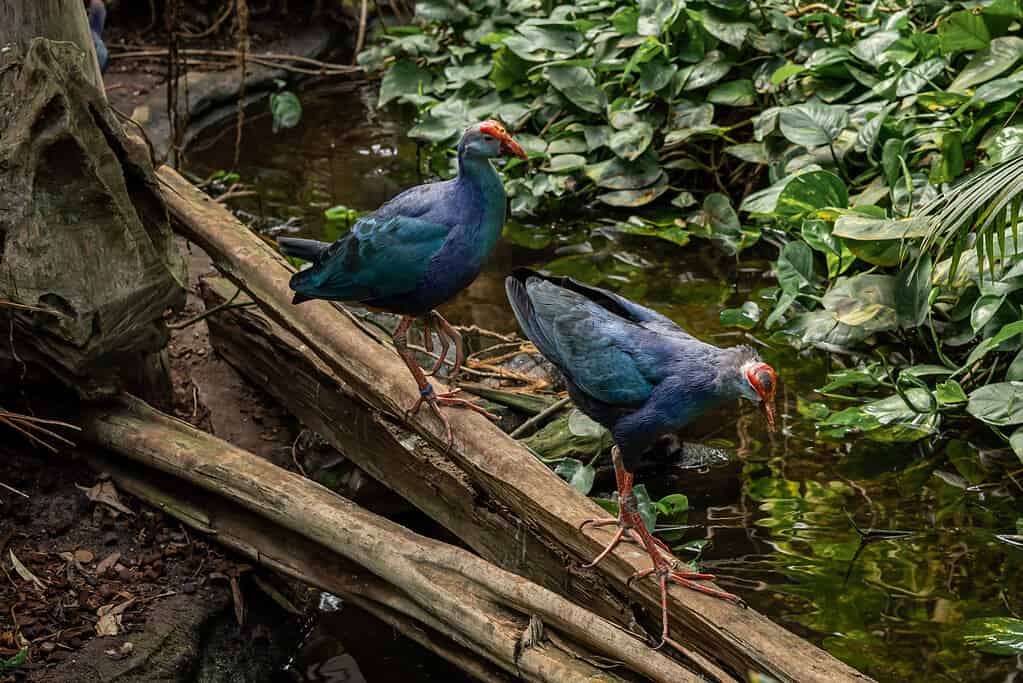
Swamphens have colorful plumage and red beaks.
©Kati Lenart/iStock via Getty Images
This colorful swamphen resides in Egypt, Madagascar, and sub-Saharan Africa. Within their range, they live in freshwater and brackish wetlands with abundant vegetation. These birds have loud, trumpet-like calls and feature purple, blue, and green plumage with red legs and beaks. Their beaks are short and thick and sit below their red face shields.
19. Broad-Billed Hummingbird
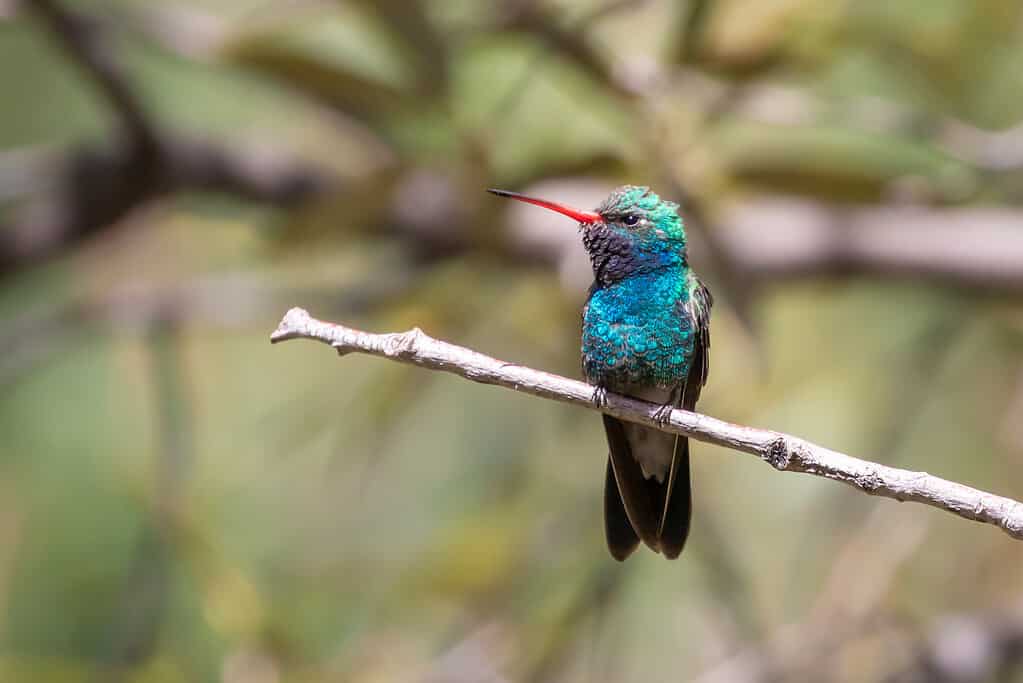
Broad-billed hummingbirds live in Mexico and the Southwest.
©Jeff Huth/ via Getty Images
In addition to a long red bill, the broad-billed hummingbird has iridescent plumage in colors like indigo, turquoise, and purple. Though it’s a common hummingbird, its glittering throat sets it apart. These small hummingbirds live in Mexico and the Southwestern United States. You can find them streamside in oak woodlands and semi-open habitats during the breeding season.
20. Red-Billed Oxpecker

These hungry birds can eat hundreds of ticks and up to 12,000 larvae per day.
©EdenF/Shutterstock.com
These olive-brown birds feature an all-red beak and red eyes. The red-billed oxpecker lives in sub-Saharan Africa, where it inhabits the Savannah. This species is known for its unusual and symbiotic behavior of perching on large animals and licking insects from their bodies.
A Recap of the 20 Birds With Red Beaks
| Number | Birds With Red Beaks | Scientific Name |
|---|---|---|
| #1 | Arctic tern | Sterna paradisaea |
| #2 | Northern cardinal | Cardinalis cardinalis |
| #3 | American oystercatcher | Haematopus pallliatus |
| #4 | Common merganser | Mergus merganser |
| #5 | Red-billed chough | Pyrrhocorax pyrrhocorax |
| #6 | Red-breasted merganser | Mergus serrator |
| #7 | Red-billed tropicbird | Phaethon aethereus |
| #8 | White ibis | Eudocimus albus |
| #9 | Green wood hoopoe | Phoeniculus purpureus |
| #10 | Black skimmer | Rynchops niger |
| #11 | Rose-winged parakeet | Psittacula krameri |
| #12 | Black Stork | Ciconia nigra |
| #13 | Purple gallinule | Porphyrio martinicus |
| #14 | Common waxbill | Estrilda astrild |
| #15 | Common tern | Sterna hirundo |
| #16 | Caspian tern | Hydroprogne caspia |
| #17 | Gray-headed kingfisher | Halcyon leucocephala |
| #18 | African swamphen | Porphyrio madagascariensis |
| #19 | Broad-billed hummingbird | Cyanthus latirostris |
| #20 | Red-billed oxpecker | Buphagus erythrorhynchus |
The photo featured at the top of this post is © Achim Schneider / reisezielinfo.de/iStock via Getty Images
Thank you for reading! Have some feedback for us? Contact the AZ Animals editorial team.






